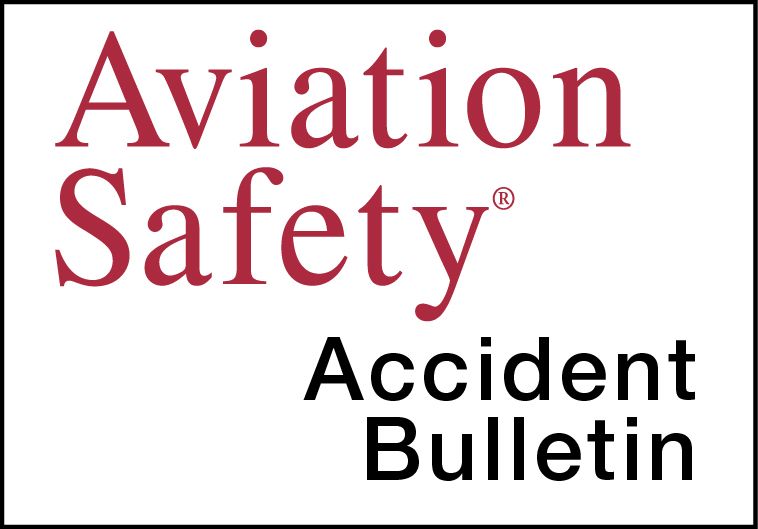AVweb’s General Aviation Accident Bulletin is taken from the pages of our sister publication, Aviation Safety magazine. All the reports listed here are preliminary and include only initial factual findings about crashes. You can learn more about the final probable cause on the NTSB’s website at www.ntsb.gov. Final reports appear about a year after the accident, although some take longer. Find out more about Aviation Safety at www.aviationsafetymagazine.com.
August 2, 2020, Alabaster, Ala.
Piper PA-30 Twin Comanche
The flight instructor and student pilot were not injured when the airplane failed to maintain altitude and descended to the ground at about 1010 Central time, shortly after takeoff.
Following an uneventful takeoff roll, the student rotated and raised the landing gear selector. The airplane then yawed to the right toward a line of trees. The instructor took the controls and attempted to correct with left rudder and aileron inputs; however, altitude could not be maintained and the airplane descended to the ground. After touchdown, the landing gear collapsed, and the airplane came to rest against a fence and trees.
August 2, 2020, Cedar City, Utah
North American Navion
At about 0839 Mountain time, the airplane struck a communications tower and terrain, sustaining substantial damage. The pilot and pilot-rated passenger were fatally injured. Visual conditions prevailed.
Radar data depict the airplane taking off at about 0815 and proceeding north. Several witnesses heard the pilot make a distress call, saying they were out of gas and were trying to land in a field. Two other witnesses observed the airplane descending prior to impact with terrain. Shortly thereafter, a nearby communications tower collapsed. All major components were located at the accident site. A support cable from the tower was observed wrapped around the front of the airplane’s nose.
August 5, 2020, Miami, Fla.
Piper PA-25 Pawnee
The airplane was substantially damaged at about 1333 Eastern time when it lost power and was landed off-airport. The solo commercial pilot was not injured. Visual conditions prevailed for the banner-towing operation.
The pilot picked up a banner at 1302 and climbed to 1300 feet MSL, then began maneuvering over his operating area at varying altitudes. He checked the carburetor heat system multiple times, by applying it for 15 to 30 seconds and noting a 100-rpm drop. At the south end of his operating area, the pilot made a position report on the air-to-air advisory frequency that the flight was at 1100 feet, turning to the north and descending to 700 feet. As he applied carburetor heat before beginning the descent, engine rpm dropped to between 1000 and 1200. Remedial actions did not restore engine power. Ensuring no boats were nearby, he dropped the banner in the water and maneuvered for a forced landing on a road, colliding with a fence during the landing roll and coming to a stop beyond it. Examination revealed adequate uncontaminated fuel aboard the airplane and its engine started and idled during a post-landing test.
August 8, 2020, Englewood, Colo.
Piper PA-28R-200 Arrow II
While demonstrating a short-field approach followed by a touch-and-go, the flight instructor was unable to correct for a quartering tailwind and the airplane landed sideways on the left main landing gear. He later stated that, “[the landing] felt a bit unusual, but the approach had been stable and the landing wasn’t that bad….” After the airplane took off, its landing gear would not retract.
After troubleshooting and declaring an emergency, the flight instructor landed the airplane with an unsafe landing gear indication. After touchdown, the left main landing gear collapsed and directional control was lost. The airplane impacted taxiway lights and came to rest upright adjacent to the runway. Examination revealed overload damage at the left main landing gear attachment point.
August 14, 2020, Gober, Texas
Czech Sport Aircraft SportCruiser LSA
At about 0800 Central time, the airplane was substantially damaged when the pilots deployed its airframe parachute. The flight instructor and student pilot were both seriously injured. Visual conditions prevailed.
According to the pilots, they were conducting stall recovery training at about 2000 feet AGL when the airplane entered a stall from which they were unable to recover. The ballistic recovery system was deployed, and the airplane impacted terrain in a nose-low attitude.
This article originally appeared in the November 2020 issue of Aviation Safety magazine.
For more great content like this, subscribe to Aviation Safety!



































